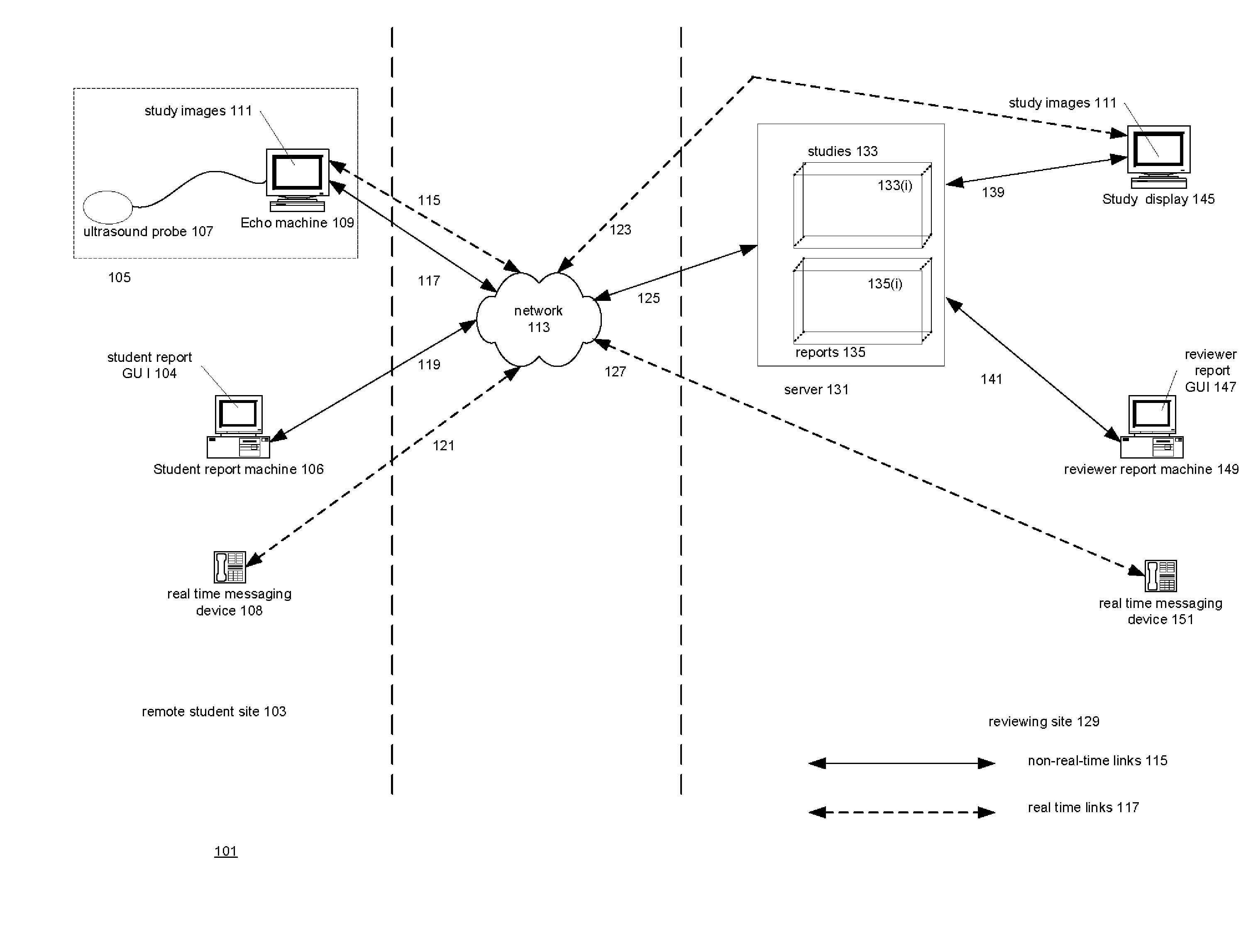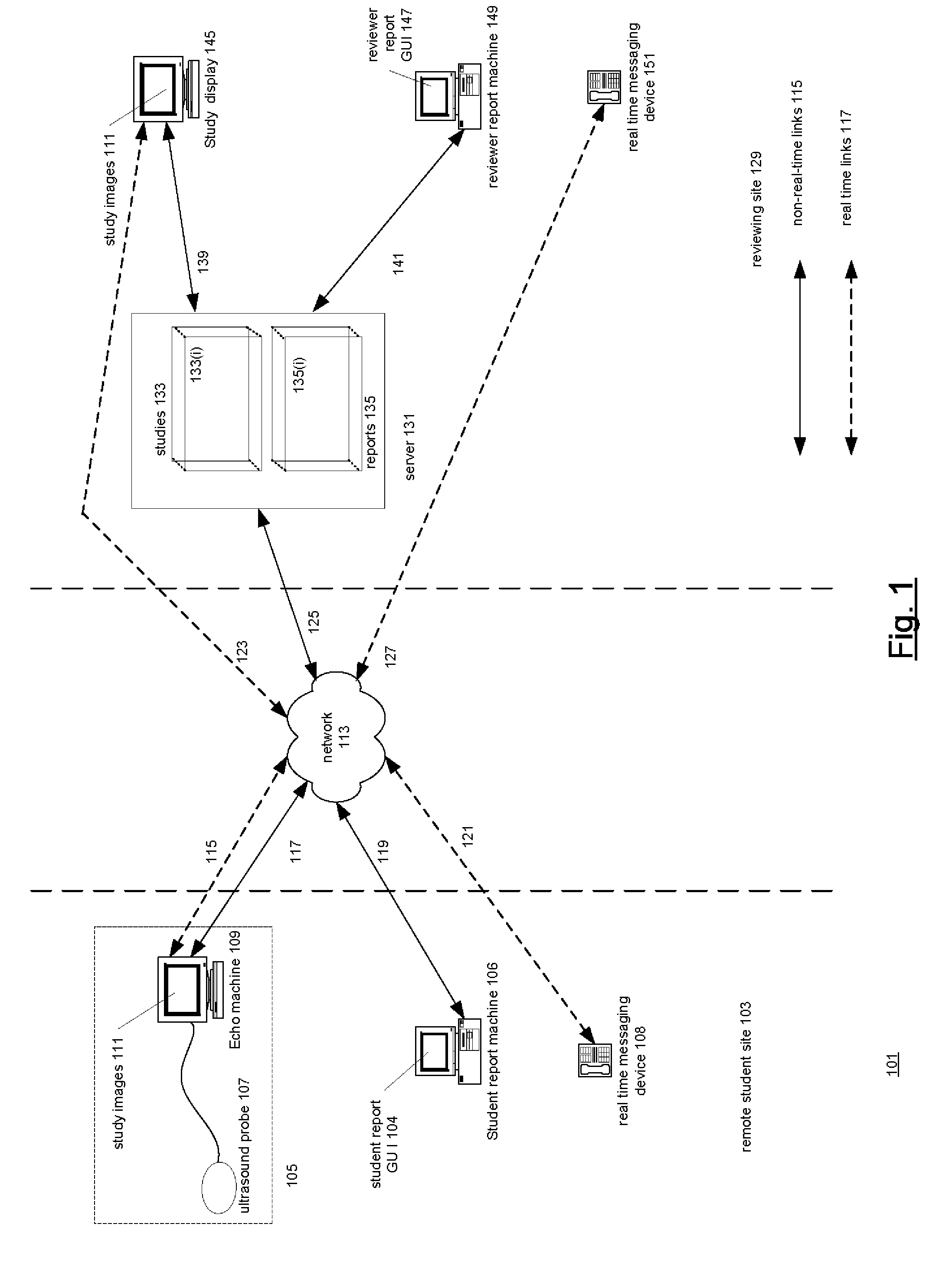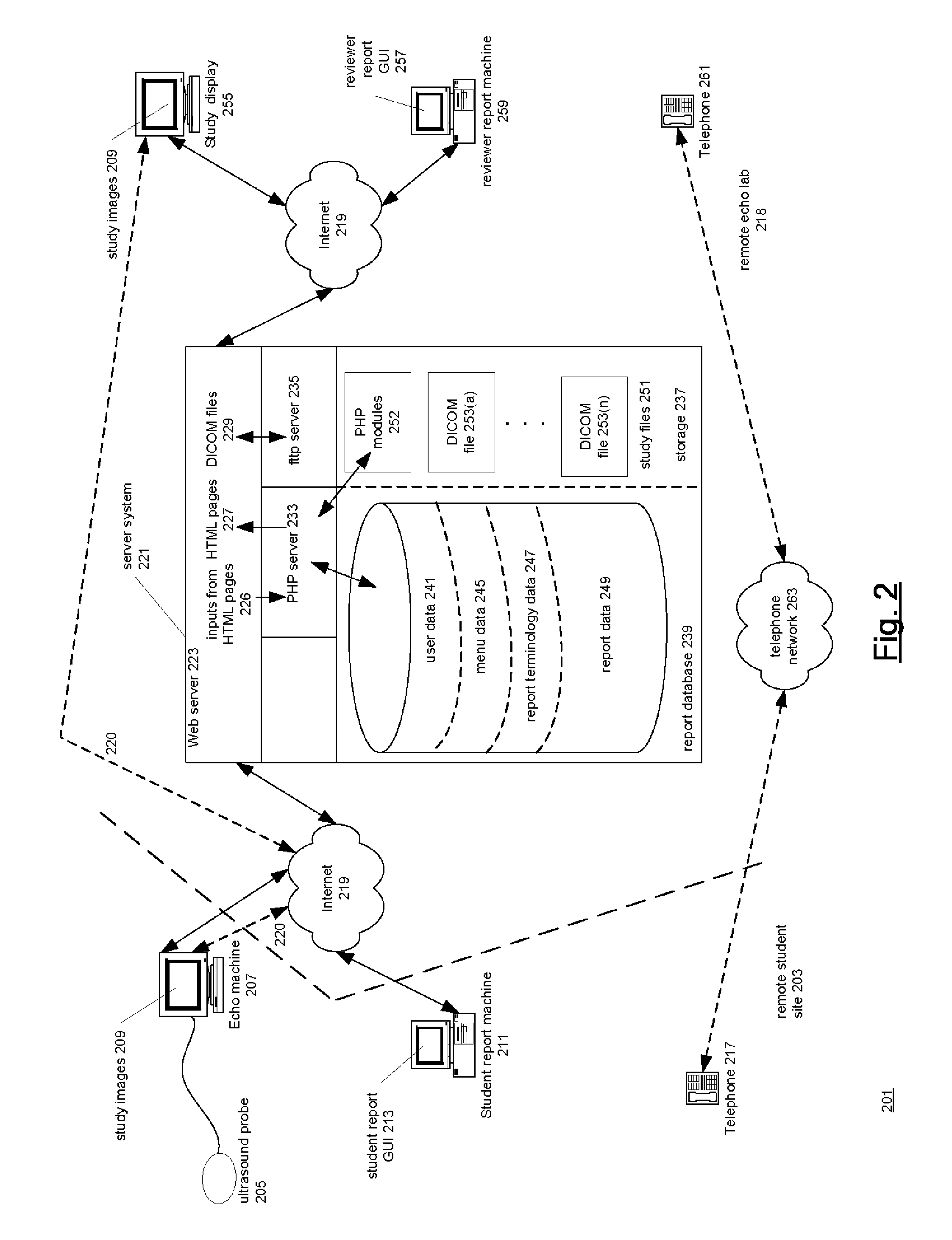Continuing education using a system for supervised remote training
a technology of remote training and continuing education, applied in the field of providing continuing education, can solve the problems of not being able to shut down or go back to school, what one learned in professional school quickly becomes obsolete, and the practice of professional cannot be shut down
- Summary
- Abstract
- Description
- Claims
- Application Information
AI Technical Summary
Benefits of technology
Problems solved by technology
Method used
Image
Examples
Embodiment Construction
[0049] The following Detailed description of the invention first describes the system for remote learning which is the subject of the parent of the present patent application. Then the Detailed description describes a curriculum which employs the system for remote learning to teach perioperative echocardiography to physicians without requiring that the physicians leave their practices. The techniques employed in the curriculum to teach echocardiography can of course be applied in any situation where intensive “hands on” training is required to use a device and interpret the device's outputs.
Conceptual Overview of the Remote Learning System: FIG. 1
[0050]FIG. 1 presents a conceptual overview of a system for remote learning 101. One part of the system is at a remote student site 103; another part of the system is at reviewing site 129; communication between remote student site 103 and teaching site 129 is by means of one or more networks 113. Two kinds of communication are possible v...
PUM
 Login to View More
Login to View More Abstract
Description
Claims
Application Information
 Login to View More
Login to View More - R&D
- Intellectual Property
- Life Sciences
- Materials
- Tech Scout
- Unparalleled Data Quality
- Higher Quality Content
- 60% Fewer Hallucinations
Browse by: Latest US Patents, China's latest patents, Technical Efficacy Thesaurus, Application Domain, Technology Topic, Popular Technical Reports.
© 2025 PatSnap. All rights reserved.Legal|Privacy policy|Modern Slavery Act Transparency Statement|Sitemap|About US| Contact US: help@patsnap.com



